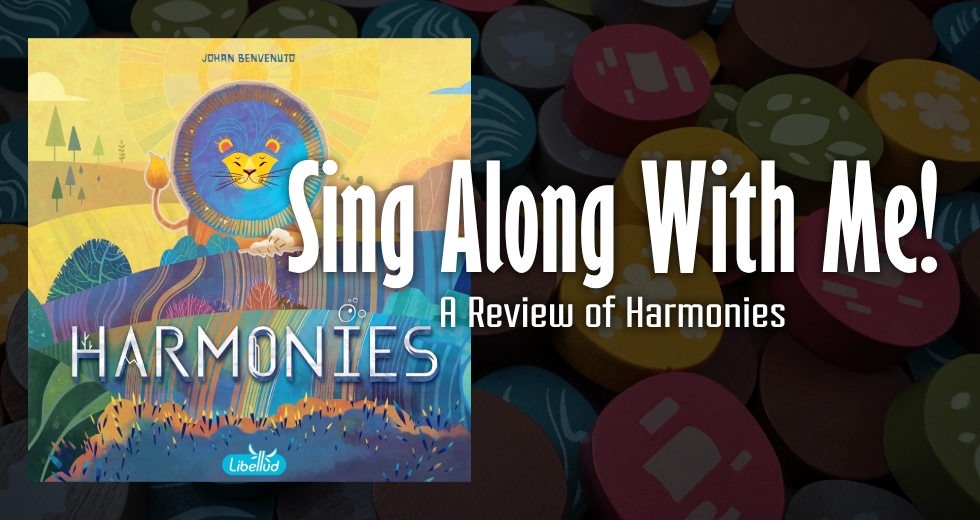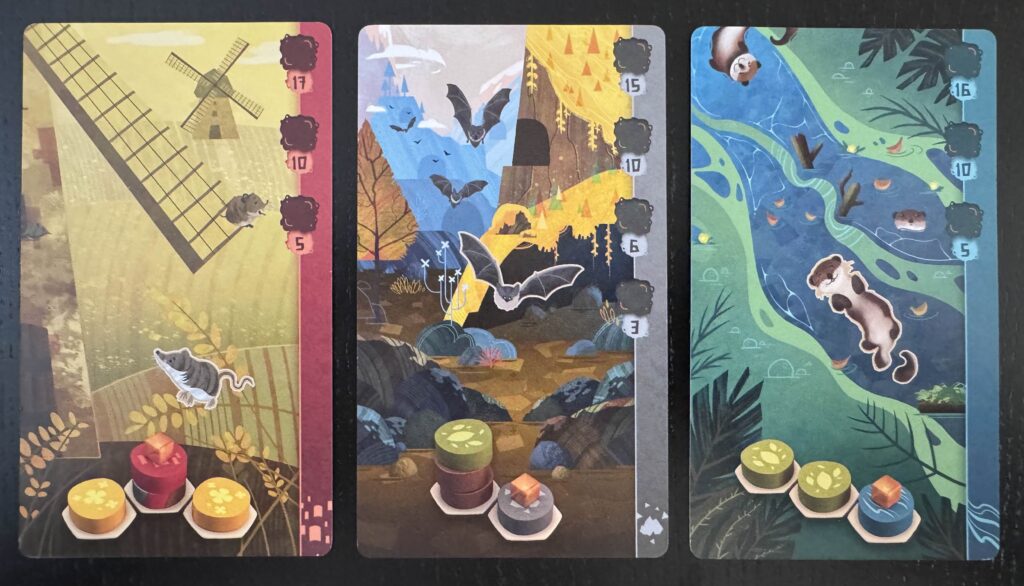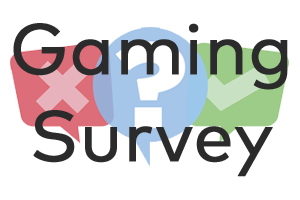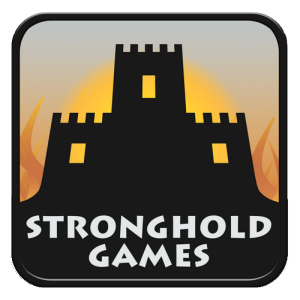Sing Along With Me! – A Review of Harmonies
Harmonies is a relatively recent release that’s gotten some good buzz around it. It’s got cute animals, puzzly gameplay, and seems pretty approachable. Is this game a high note or a cacophony of noise?

Harmonies is a game that came out recently both on BoardGameArena and in real life. I’ll admit that the gameplay caught my attention more than the art, not that the art is bad, and it looked a little bit like a game in the same space as Cascadia.
I played the solo game on BGA to get a feel for it and was hooked. The pushing to get the right environment tiles at the right time, pairing environments with the right animals to get as many cubes down as you can, and trying to squeeze out a few more points all come together.
On a turn, a player has to add environment tiles to their board. These are randomly drawn from a bag and are set up as five options of three tiles. Before or after each placement, the player may place animal cubes as much as they’d like or take a single animal card for the turn. The requirements of each animal are based around two terrain types and how they are laid out in relation to each other. For example, mice want a building adjacent to two fields, bats want to be in low mountains next to tall trees, and otters want to be in water ahead of two low trees.

A sampling of the animal cards – mice, bats, and otters
As each animal cube is placed, that animal will be worth more points. Once cleared, the animal card no longer takes up one of the four slots each player has for animal cards, allowing the player to take a new one and try to add to this new creature to their board.
Points are also gained at the end of the game for each terrain type. Mountains are worth more points when taller, but must be a part of a range. Trees are worth more when taller as well. Buildings are worth points if they’re surrounded by three or more types of terrains. Fields are worth points for every group of two or more. Water changes how it scores based on which side of the player board you’re using. Either a growing score for having a long river on one side or points for each area separated by water.
Having played a ton of this on BGA, I think my main complaints are that it seems a little more chaotic for two players than it does for any other player count. With 120 tokens in the game and that not changing for any player count, it’s very possible that the tokens you are after just don’t come out. My wife and I recently had a game where we both were wanting yellow field tokens, but for the first 90% of the game, we saw a total of five. By the time any more came out, we were already mostly done with the game. The animal cards can also stall out because if neither player is making much progress on their animal cards, there’s little want or opportunity to try to get more. That being said, two player is still quite fun and we have a good spirit where we’ll help each other realize things and catch opportunities. This has led to Harmonies being the go-to game to play while we’re eating dinner.
I also dislike how Libellud (distributed by Asmodee) handled the promo materials. If you want to get the promo, which consists of an extra card and four premium Nature Spirit tokens, you had to get the game right when it first came out. Unfortunately it was more popular than a lot of folks realized and copies were quickly gone, leaving anyone else who wants to get the promo stranded. This is of course a silly thing to be annoyed about, but as someone who suffers from completionism, it just seems like there’s a better way to handle something like this. Adding cards or other promo items that don’t impact gameplay and have different art or design is a much better option in my experience, as it doesn’t impact the gameplay but is still a cool thing to have.
Overall, there are some things that could be worked on, but Harmonies is a solid game. It’s quick to learn, pretty quick to play, and gives a feeling like solving a puzzle if you do particularly well. There is room for analysis paralysis, and with four players it can frustrating to plan a turn just to have to replan it based on what everyone else does before your next one. It’s thinky but not overly complicated, pretty but not just for pretty sake, and a great game for replayability.





